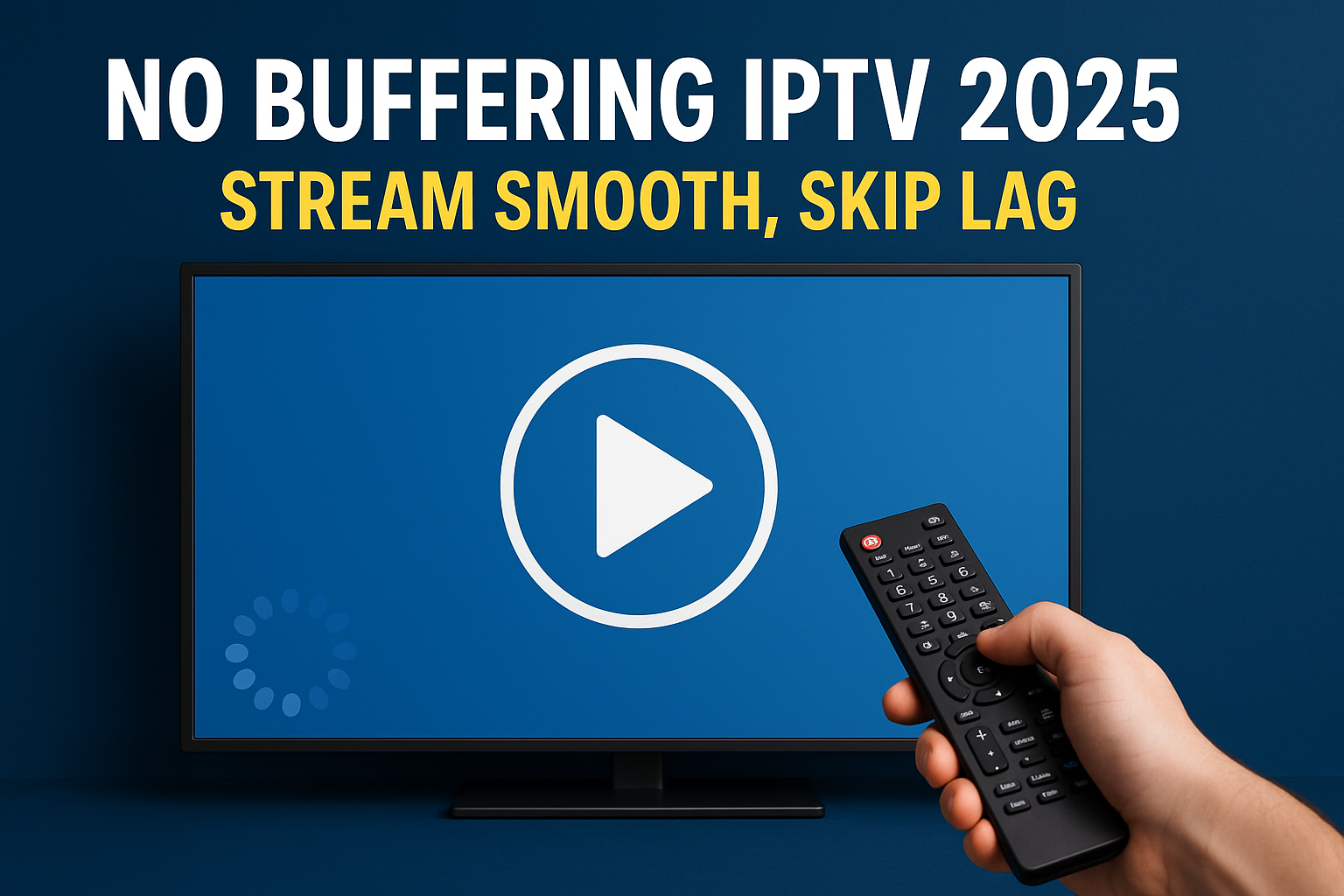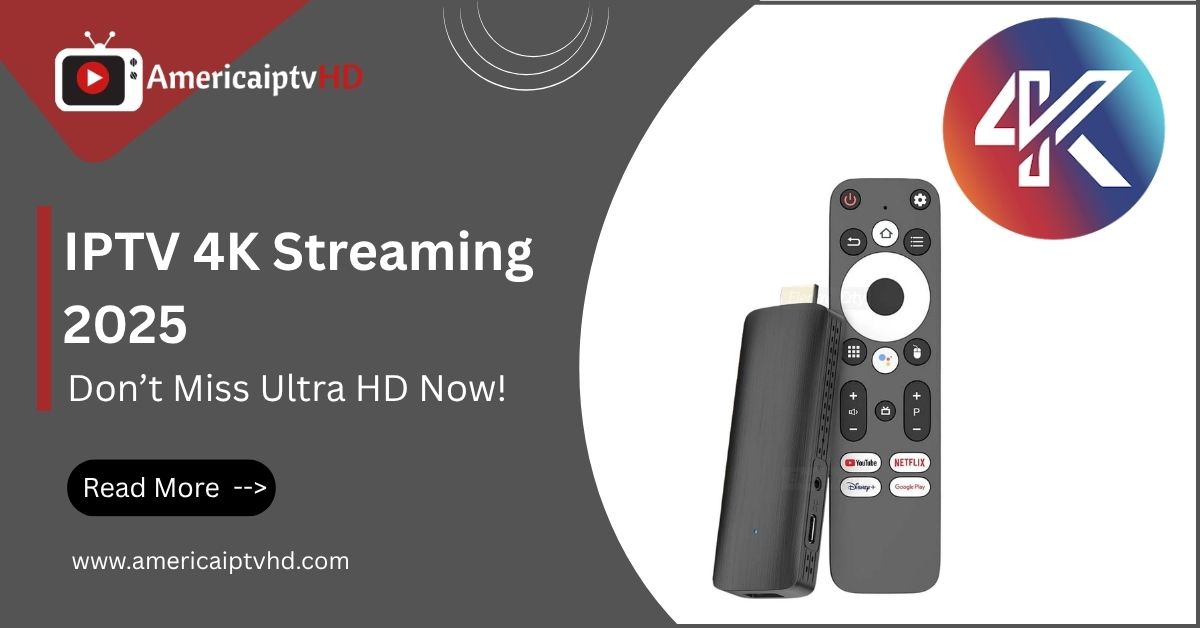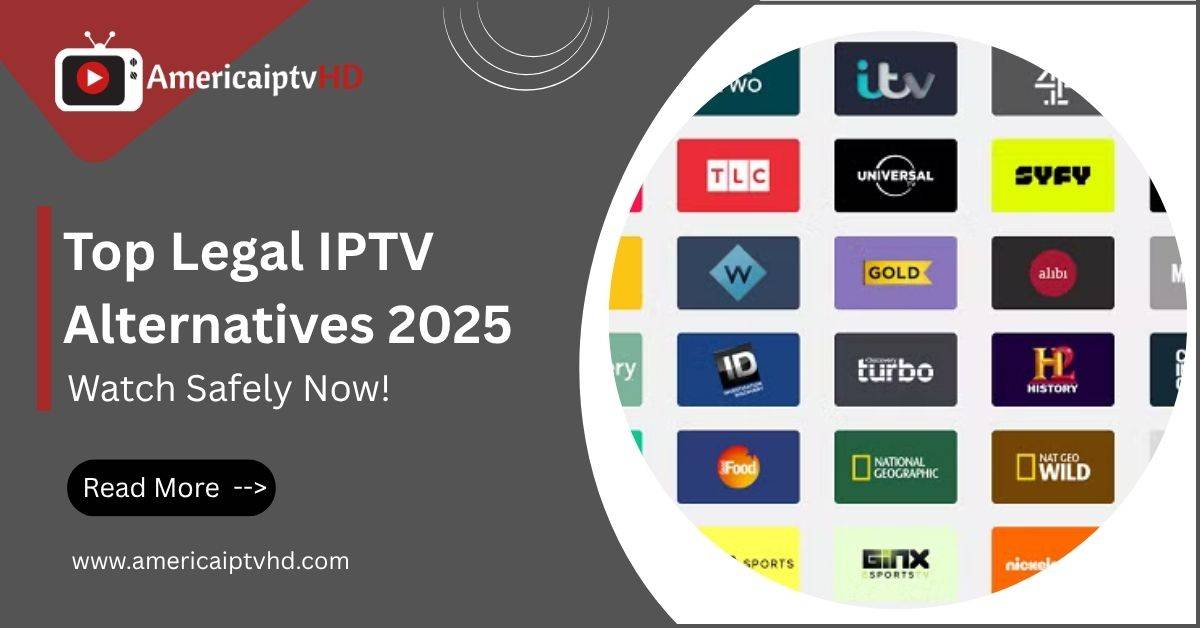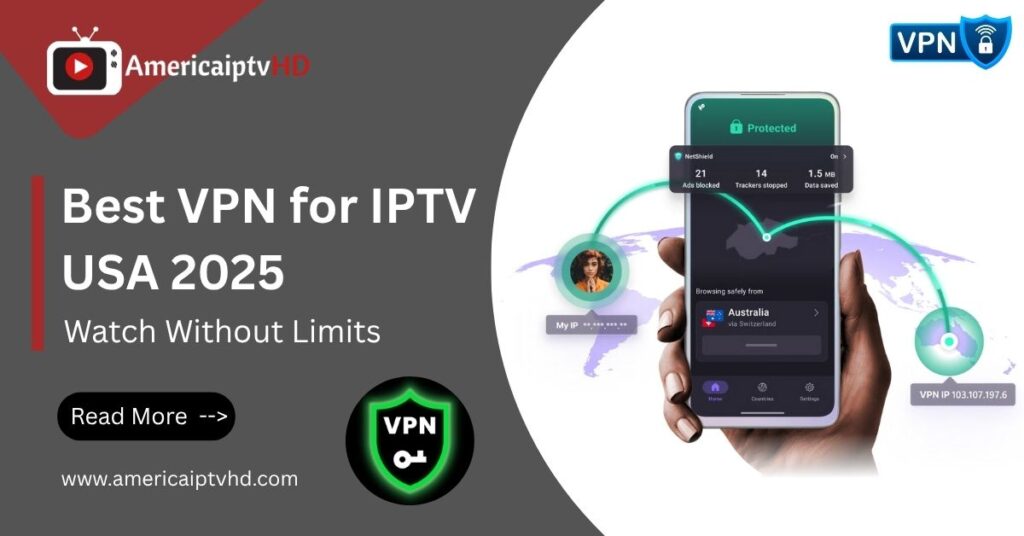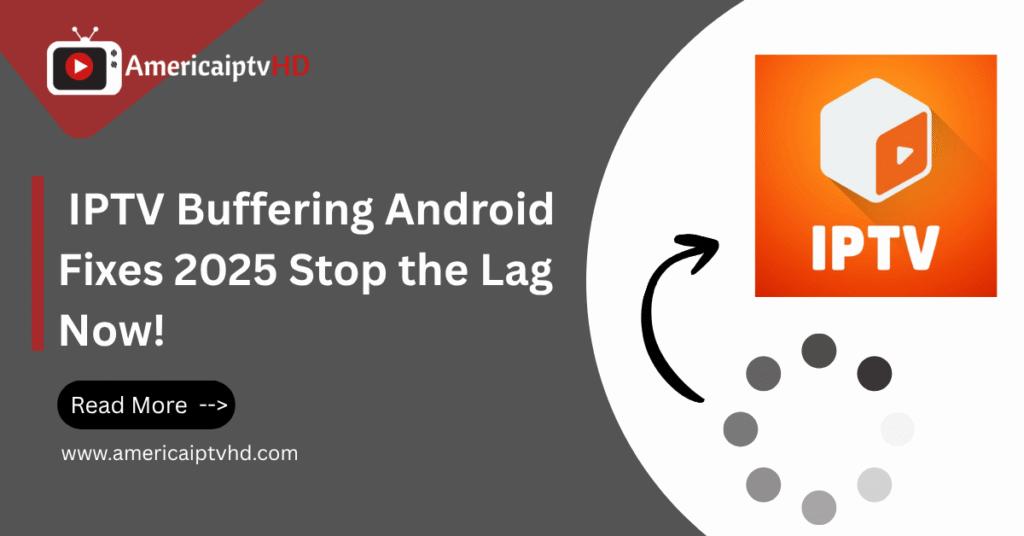Introduction to IPTV and Buffering Issues
What is IPTV?
IPTV, or Internet Protocol Television, has flipped the traditional broadcasting model on its head. Rather than relying on satellite signals or cable networks, IPTV uses the internet to stream live TV channels, movies, and shows directly to your device. In 2025, it’s no longer a novelty—it’s the standard. From Smart TVs to smartphones, IPTV content is just a click away, making it more flexible and customizable than ever before.
The beauty of IPTV lies in its on-demand capability. Unlike conventional TV, you’re no longer at the mercy of scheduled programming. Whether it’s binge-watching the latest thriller at midnight or catching a football match on a lunch break, IPTV fits into your schedule, not the other way around.
But there’s a caveat this seamless experience is only as strong as your internet connection and streaming setup. When done right, IPTV is a dream. When done wrong? It’s a buffering nightmare.
Why Buffering is a Big Deal for IPTV Users
Buffering the arch-nemesis of smooth streaming. You know the feeling: you’re mid-episode or watching a crucial goal in a live match, and suddenly… the dreaded spinning circle appears. It ruins the moment, disrupts the flow, and often forces viewers to restart or switch services entirely.
For IPTV users in 2025, buffering isn’t just annoying—it’s unacceptable. Why? Because with advancements like 5G, gigabit fiber, and AI-powered streaming engines, there’s really no excuse for it anymore. The expectations are higher, and the tolerance for lag is lower.
Streaming without interruptions is no longer a luxury; it’s a necessity. Whether you’re a casual viewer or a die-hard sports fan, smooth, lag-free IPTV is the difference between a great experience and a wasted one. So the pressure is on providers, devices, and users to get it right—every single time.
You Cane Visit Our Article: IPTV vs Cable TV in 2025
Understanding the Root Causes of Buffering
Internet Speed and Network Congestion
You can have the most advanced IPTV app on the market, but if your internet connection is slow or congested, you’re going to run into trouble. In 2025, the minimum recommended internet speed for HD IPTV is around 25 Mbps, while 4K streaming demands at least 50 Mbps. But it’s not just about raw speed—consistency and low latency matter just as much.
Many homes now run on shared connections with multiple devices fighting for bandwidth—think gaming consoles, smart speakers, laptops, and smart home gadgets all chewing away at the same pie. This can cause major slowdowns, especially during peak usage hours when everyone in the neighborhood is online.
Another key player? Network congestion. When too many people are streaming at once, especially from the same ISP or region, your IPTV service might struggle to keep up. ISPs often throttle bandwidth too, especially for high-data services like video streaming. Using a VPN sometimes helps bypass throttling, but it’s not a guaranteed fix unless your base speed is already high.
Server Load and IPTV Provider Limitations
Even with a flawless internet connection, buffering can still happen if your IPTV provider’s servers are overloaded. Not all IPTV services are created equal. Some providers cut corners by hosting their content on low-tier servers or by overloading single servers with thousands of users.
When servers can’t handle the traffic, the stream lags or fails to load entirely. This is especially true during high-demand times like sports finals or series premieres. Reliable providers invest in scalable server infrastructure and global CDN (Content Delivery Network) integration to ensure steady performance no matter how many users are online.
So before blaming your internet, ask: is the IPTV provider up to par?
Hardware Compatibility and Device Performance
Let’s not forget the gear. Your IPTV experience is only as smooth as the weakest link in your setup. Using outdated smart TVs, underpowered TV boxes, or generic Android devices can bottleneck your stream even with perfect internet and servers.
Older hardware struggles to decode high-bitrate streams efficiently, leading to lag, skipped frames, and—you guessed it—buffering. Devices without sufficient RAM or processing power can’t keep up with modern IPTV demands, especially with high-res content and multi-device streaming.
In 2025, optimized hardware like Nvidia Shield, Fire TV Cube (latest gen), and premium Android TV boxes are designed specifically for fast, responsive IPTV use. They support hardware acceleration, faster memory, and better network interfaces like gigabit Ethernet or WiFi 6E.
In short, a good IPTV setup requires a three-part synergy: solid internet, reliable provider, and capable hardware. Ignore any one of these, and buffering is bound to catch up with you.
Technological Advances in 2025 Improving IPTV Experience
5G and Fiber Optic Integration
Say goodbye to spotty streaming! 2025 has seen the rollout of lightning-fast internet technologies—namely, 5G and fiber optics—pushing IPTV to new heights. Fiber optic internet, already widespread in urban areas, offers symmetrical upload and download speeds, minimal latency, and insane stability. That means you can stream 4K, join video calls, and download files—all at the same time—with zero hiccups.
Then there’s 5G. Unlike the early rollout stages in the 2020s, 5G in 2025 is robust and widely available. Whether you’re on your couch or catching up on a show in the backseat of a self-driving car, 5G ensures you’re not seeing the buffer symbol. The near-zero latency and ultra-high speed make mobile IPTV streaming a seamless experience.
But the magic really happens when these two technologies converge. Many IPTV providers now design their services to take full advantage of fiber backbones and 5G edge delivery. As a result, users enjoy adaptive bitrates, which automatically adjust quality to match connection speed without ever pausing the stream.
AI-Powered Streaming Optimization
AI isn’t just running your smart home anymore—it’s making your IPTV experience smarter, faster, and smoother. AI-powered optimization is one of the biggest breakthroughs for IPTV in 2025. Here’s how:
-
Predictive Caching: AI algorithms analyze your viewing habits and preload segments of the shows or channels you’re most likely to watch.
-
Dynamic Bitrate Switching: AI can instantly shift video quality up or down based on real-time internet performance, avoiding buffering while maintaining the best possible clarity.
-
Load Balancing: By predicting demand, AI distributes server load intelligently across different nodes and locations.
The result? A seamless stream that adapts in real time without forcing you to notice the transitions. No more jarring drops in quality or endless reloading screens.
Edge Computing for Faster Data Delivery
Edge computing is another game-changer for IPTV. Instead of sending data all the way from a central server halfway across the globe, edge computing processes and delivers content from servers located much closer to you. Think of it as having a mini-data center right in your city.
By reducing the distance data needs to travel, edge computing dramatically cuts down latency and buffering. It’s particularly effective for live broadcasts and events that can’t afford delays—like sports, concerts, and live news.
In 2025, many IPTV platforms are integrating edge nodes into their content delivery strategies. Whether you’re in New York, Nairobi, or New Delhi, you’re likely streaming from a nearby edge server—one of the reasons buffering has become a thing of the past for most forward-thinking providers.
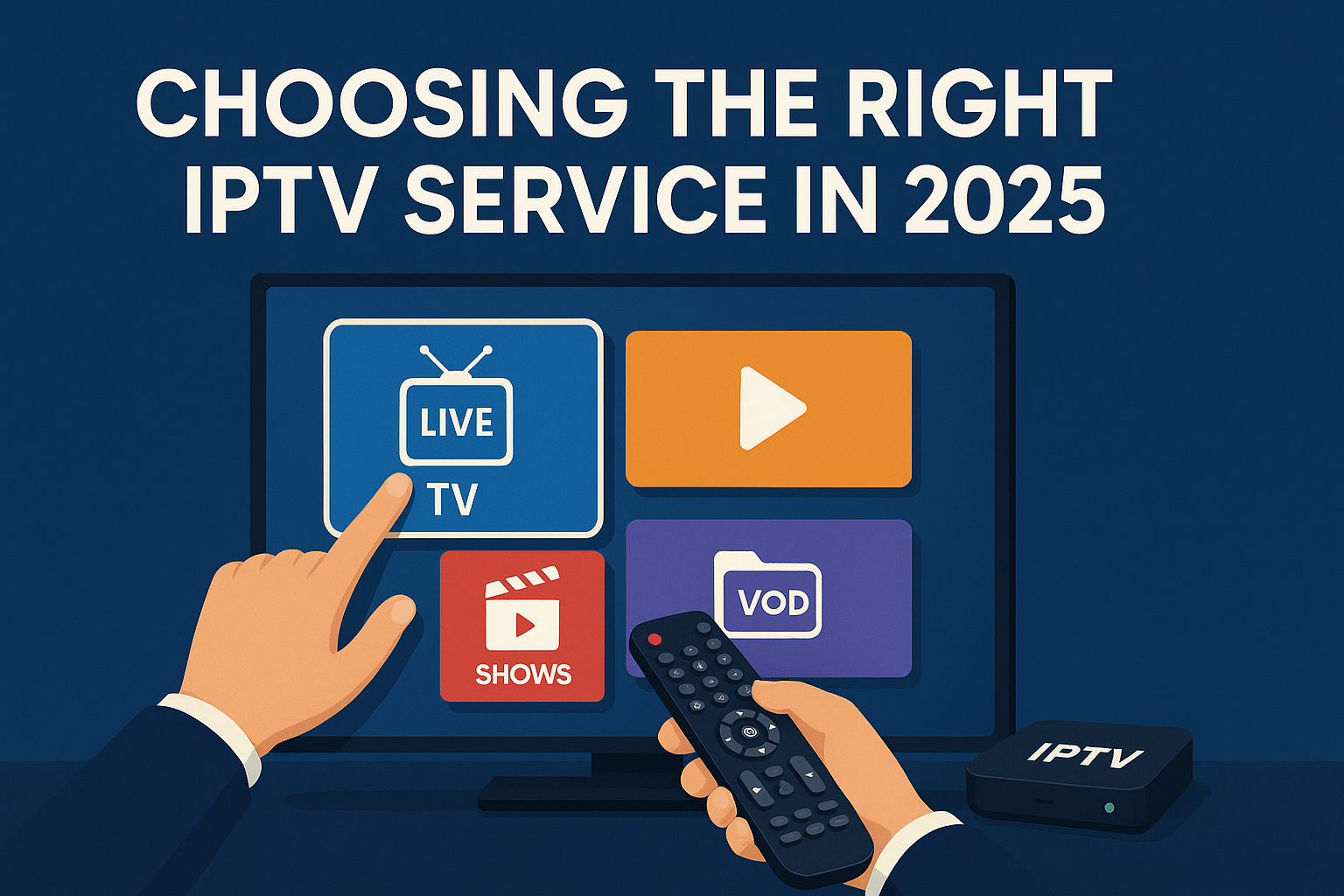
Choosing the Right IPTV Service in 2025
Key Features to Look for in a No-Buffer IPTV Provider
Not all IPTV services are built alike. Some are sleek, polished, and buffer-free. Others? They’re barely holding it together with overloaded servers and questionable content legality. So what should you look for when choosing an IPTV provider in 2025?
-
High Uptime Guarantee: A provider that promises (and delivers) 99.9% uptime shows commitment to performance.
-
CDN Integration: Ensure they use Content Delivery Networks to serve content faster from servers closest to your location.
-
Adaptive Bitrate Streaming: This ensures the stream adjusts to your connection speed in real time—no freezing.
-
Wide Device Compatibility: From Android boxes to iOS, a great IPTV service should work smoothly across platforms.
-
User-Friendly Interface: A clean, intuitive UI with fast channel switching and easy EPG navigation makes a huge difference.
-
Responsive Support: If something goes wrong, fast, helpful customer service is a must.
-
Security Features: Look for encrypted streams and secure payment methods to avoid shady practices.
Make sure to trial the service before committing. Many premium IPTV services now offer 24–72-hour trials, letting you test for lag, quality, and overall performance.
Top-Rated No-Buffer IPTV Services of 2025
By mid-2025, several IPTV services have earned their stripes as premium, buffer-free providers. Based on reviews, performance benchmarks, and user feedback, here are a few standout names:
| IPTV Service | Price Range | Unique Feature | Known For |
|---|---|---|---|
| StreamFlare Pro | $14.99/mo | 5G optimization & AI streaming | Zero lag on 4K |
| UltraStream IPTV | $12.50/mo | Cloud-based DVR & edge computing | Seamless live sports |
| NovaIPX | $10.99/mo | Smart buffering prediction | Great for slow networks |
| OrionView | $19.99/mo | Unlimited device support | Crystal-clear 4K |
| IPTV Vortex | $8.99/mo | Auto-sync across devices | Budget-friendly & smooth |
These services aren’t just good—they’re built for the kind of performance 2025 demands. Fast loading times, minimal to zero buffering, and broad device compatibility are standard. Plus, many offer native apps for both Android and iOS, simplifying installation and access.
Remember, cheaper isn’t always better. The few extra bucks a month are often worth it if you never have to scream at a frozen screen again.
Network Optimization Tips for Buffer-Free Streaming
Best Router Settings for IPTV
Your router is the gatekeeper of your IPTV experience. Even with a fast internet plan, poor router settings can strangle your stream. Here’s what to adjust for optimal performance:
-
Enable IGMP Snooping: This helps manage multicast IPTV traffic, improving delivery and reducing congestion.
-
Use Static IPs for IPTV Devices: Assigning a static IP lets you manage traffic more efficiently and apply QoS settings accurately.
-
Disable SIP ALG: This setting, used for VoIP, can interfere with IPTV streams. Best to keep it off.
-
Use 5GHz WiFi Band: If you’re stuck with WiFi, make sure you’re on the 5GHz band for less interference and more speed.
-
Update Firmware Regularly: Security patches and performance upgrades can make a big difference.
Investing in a quality router—especially one with IPTV QoS presets—can be a game-changer. Models like the ASUS RT-AX86U or Netgear Nighthawk XR1000 are top picks in 2025 for serious streamers.
Using Ethernet Over WiFi for Stability
If you’re serious about streaming, ditch WiFi. No matter how good your router is, WiFi will never be as stable as a direct Ethernet connection.
Here’s why Ethernet rules:
-
No Interference: Unlike WiFi, which can be affected by microwaves, neighbors, and thick walls, Ethernet is direct.
-
Faster Data Transfer: Especially for 4K and HDR content, where every bit counts.
-
Consistent Speeds: WiFi can fluctuate wildly; Ethernet gives you steady throughput.
-
Lower Latency: Perfect for live IPTV where delays are unacceptable.
Use CAT6 or CAT7 cables to future-proof your setup and ensure top speeds. If direct cabling isn’t possible, consider Powerline Ethernet adapters—they use your home’s electrical wiring to simulate an Ethernet connection with decent reliability.
Quality of Service (QoS) Configuration for IPTV Priority
QoS is a secret weapon most people overlook. With a few tweaks, your router can prioritize IPTV traffic over everything else, ensuring your streams stay smooth even when others are hogging bandwidth.
Here’s how to configure QoS:
-
Login to Your Router Settings: Usually at 192.168.1.1 or 192.168.0.1.
-
Find the QoS Section: Look for terms like “Traffic Prioritization” or “Device Prioritization.”
-
Set IPTV Devices as High Priority: You can use MAC or IP addresses to assign priority.
-
Adjust Bandwidth Allocation: Reserve a set percentage of total bandwidth for IPTV streaming.
-
Enable WMM (Wi-Fi Multimedia): Helps prioritize video streaming over general internet tasks.
Proper QoS settings can be the difference between watching TV and watching a frozen screen. Don’t skip it!
IPTV Boxes and Devices That Eliminate Buffering
Android TV Boxes vs. Smart TVs
Smart TVs have come a long way, but in 2025, Android TV boxes still reign supreme when it comes to a buffer-free IPTV experience. While Smart TVs are convenient, they often come with limitations—slower processors, lack of storage, restricted app compatibility, and sluggish firmware updates. Android TV boxes, on the other hand, offer power, flexibility, and advanced streaming capabilities that Smart TVs can’t touch.
Here’s why Android boxes win:
-
Regular Firmware Updates: Many smart TVs are abandoned by manufacturers after a few years, while Android boxes often get frequent OS updates and security patches.
-
Faster Processors: High-performance chips like the Amlogic S905X4 and NVIDIA Tegra X1 ensure smooth decoding of 4K and HDR content.
-
Expandable Storage: Need more space for apps and downloads? Most Android boxes allow external storage via USB or SD cards.
-
Advanced Apps: Some IPTV apps are not available on native Smart TV stores but work perfectly on Android boxes.
Popular picks for 2025 include:
-
Nvidia Shield TV Pro – The ultimate beast for IPTV, offering lightning-fast performance and AI upscaling.
-
Formuler Z11 Pro Max – Built specifically for IPTV with a custom interface and MyTVOnline3 integration.
-
Amazon Fire TV Cube (3rd Gen) – Versatile, fast, and voice-controlled with Alexa integration.
While Smart TVs are fine for casual users, power users who demand 100% buffer-free performance lean toward Android TV boxes for a reason.
2025’s Top IPTV Set-Top Boxes
In 2025, the set-top box market is thriving, and new contenders have emerged to deliver exceptional IPTV experiences. These aren’t just basic boxes—they’re streaming powerhouses designed with one purpose: to crush buffering once and for all.
Here are the standout IPTV set-top boxes of 2025:
| Device | Price | Key Features | Best For |
|---|---|---|---|
| Nvidia Shield TV Pro | $199 | AI upscaling, Gigabit Ethernet, Dolby Vision | High-end streaming |
| Formuler Z11 Pro Max | $179 | IPTV-ready, fast boot, 4GB RAM | Dedicated IPTV users |
| BuzzTV X5 AX | $169 | Wi-Fi 6, Android 11, IR + BT remote | Advanced users |
| MAG524w3 | $149 | Linux OS, HEVC support, 4K ready | Simple IPTV viewing |
| Fire TV Cube (3rd Gen) | $129 | Alexa voice control, fast load times | Smart home lovers |
These devices come pre-loaded or compatible with popular IPTV apps and support hardware acceleration for faster, smoother playback. If you want to eliminate buffering, your first investment should be in the right hardware.
Mobile IPTV: Best Practices for Smartphones and Tablets
Streaming IPTV on your mobile device is easier than ever—but if you want to enjoy a lag-free experience, there are a few things to keep in mind.
-
Use IPTV-Compatible Apps: Not all video players handle IPTV streams well. Go for apps like TiviMate, XCIPTV, or IPTV Smarters Pro that are optimized for mobile.
-
Switch to 5G or Wi-Fi 6: Mobile networks are great in 2025, especially if you’re connected to 5G or have access to a Wi-Fi 6 router.
-
Clear Cache Regularly: Frequent streaming builds up junk files that slow down your device. Clear your app cache weekly.
-
Use VPN Smartly: Some mobile networks throttle video traffic. A good VPN (like NordVPN or ExpressVPN) can help you bypass this and enjoy smoother playback.
-
Keep Background Apps Closed: Apps running in the background can steal memory and bandwidth—kill them before streaming.
Whether you’re on a tablet in bed or watching the game on your phone while commuting, these best practices ensure IPTV without the lag.
Role of IPTV Apps in Buffering-Free Streaming
Features of the Best IPTV Apps in 2025
In 2025, IPTV apps are smarter, faster, and packed with features designed to combat buffering head-on. A powerful app isn’t just about a nice interface—it needs to work efficiently under all network conditions, support various formats, and deliver a clean experience without crashes.
Here’s what sets top IPTV apps apart:
-
Built-in Buffer Settings: Let you adjust how much content is preloaded to avoid mid-stream buffering.
-
External Player Support: Compatibility with VLC, MX Player, and ExoPlayer adds flexibility.
-
EPG Integration: Clean Electronic Program Guide helps you browse and schedule recordings easily.
-
Multi-Screen Viewing: Watch two streams at once on a single screen—ideal for sports and news fans.
-
Auto Reconnect: When a stream drops, the app reconnects automatically without needing manual refresh.
Top IPTV apps in 2025:
-
TiviMate Premium – The gold standard for Android IPTV, featuring polished UI and seamless performance.
-
IPTV Smarters Pro – Popular for its powerful features and cross-platform usability.
-
XCIPTV Player – A sleek, intuitive design with fast loading and dynamic buffering.
-
OTT Navigator – Great for advanced users who want deep customization options.
Choose the right app, and your IPTV experience becomes buttery smooth—even if your connection occasionally wobbles.
Customizable Buffers and Cache Settings
One of the lesser-known secrets to smooth IPTV streaming is fine-tuning buffer and cache settings. Think of buffering like filling a bathtub: you want enough water stored up so you can enjoy the bath uninterrupted, even if the faucet slows for a bit.
Here’s how customizable buffering helps:
-
Short Buffer: Ideal for fast connections—gives you instant stream loading with low latency.
-
Medium Buffer: Balances speed and reliability—good for average home networks.
-
Long Buffer: Best for unstable networks—preloads more content upfront to prevent stalling.
Many IPTV apps let you tweak these settings manually. Under “Settings > Playback” or “Settings > Player,” you’ll often find options like:
-
Initial Buffer Duration (5-60 seconds)
-
Pre-buffering toggle for live streams
-
Auto-clear cache frequency
Experiment with different settings based on your internet speed. For slower or inconsistent connections, extending the buffer size can completely eliminate buffering—even if the speed dips occasionally.
Cloud-Based IPTV Services: The Future Standard
How Cloud Streaming Reduces Lag
Cloud IPTV is the next frontier. Rather than relying solely on user-end devices and localized apps, cloud-based IPTV streams are processed, optimized, and delivered directly through robust cloud servers. In simple terms, the cloud does the heavy lifting so your device doesn’t have to.
Here’s how it helps eliminate buffering:
-
Load Balancing: Cloud servers distribute the load evenly, preventing overloading and server crashes.
-
Auto Scaling: If demand spikes—like during a big match—the cloud allocates more resources instantly to maintain smooth performance.
-
Real-Time Transcoding: Video is adjusted on the fly to match your bandwidth, device, and screen size.
-
Redundancy: If one server fails, another takes over instantly—no more downtime.
Services like UltraStream and IPTV Vortex are already built entirely in the cloud, offering faster and more stable experiences than older, local-hosted models. For 2025 and beyond, cloud IPTV isn’t optional—it’s essential.
Scalability and Global Access
One of the major advantages of cloud IPTV is its scalability. Whether you’re an individual viewer or a hotel streaming to hundreds of rooms, the same infrastructure can scale up or down instantly.
And it’s not just about performance—cloud IPTV allows for true global access. With edge nodes in various countries, viewers get the best possible stream quality regardless of geography.
This makes cloud IPTV perfect for:
-
Travelers: Watch your home channels without lag from anywhere in the world.
-
Expats: Enjoy region-specific content without geo-restrictions.
-
Enterprises: Deliver IPTV across multiple locations seamlessly.
It’s the future of streaming—borderless, bufferless, and brilliant.
Avoiding Free IPTV Pitfalls
Risks of Buffering with Free IPTV Services
Let’s face it—free IPTV can be tempting. Who wouldn’t want access to thousands of channels without paying a dime? But here’s the harsh truth: most free IPTV services are riddled with buffering, poor-quality streams, and unreliability. In 2025, the gap between free and premium IPTV is wider than ever.
Here’s why free IPTV often leads to frustration:
-
Overloaded Servers: Free services usually run on underpowered servers with no scalability, causing constant lag and buffering.
-
Unstable Stream Sources: They pull streams from unstable or illegal sources that get taken down frequently.
-
No Technical Support: When your stream dies in the middle of a match, you’re on your own.
-
Ad-Heavy Interfaces: Intrusive pop-ups and redirects are not just annoying—they eat into bandwidth and affect stream quality.
-
Security Risks: Many free IPTV apps are laced with malware or collect your data without consent.
In short, free IPTV may save you money but cost you your sanity. It’s a classic case of “you get what you pay for.” Unless you’re willing to tolerate endless buffering and questionable legality, premium is the way to go.
How to Identify Reliable Free IPTV Options
If you still want to explore free IPTV options, there are ways to do it more responsibly. Here’s how to find more reliable (and legal) sources:
-
Look for Official Channels: Some governments and broadcasters offer free IPTV channels—news, education, and public access.
-
Use Open-Source Apps: Platforms like Kodi, Pluto TV, and Xumo offer legitimate free content with minimal buffering.
-
Avoid APKs from Unknown Sources: Stick to apps from trusted platforms like Google Play or Amazon Appstore.
-
Join IPTV Forums: Reddit communities like r/IPTV and IPTV Talk share regularly updated lists of working, safe streams.
-
Use a VPN: Even with free apps, using a VPN can help avoid ISP throttling and improve stability.
While free IPTV won’t ever match the buffer-free performance of premium services, these tips can help you make the most of what’s available—without tearing your hair out.
Real-World User Tips for Zero Buffering
Community-Tested Hacks and Solutions
Sometimes, the best advice comes from people who’ve been through the buffering trenches and made it out the other side. In 2025, IPTV users across the globe have developed tricks, tips, and hacks that drastically reduce lag.
Here are some of the most recommended user-tested tips:
-
Change IPTV DNS Settings: Use faster DNS services like Google DNS (8.8.8.8) or Cloudflare (1.1.1.1) for better resolution times.
-
Stream During Off-Peak Hours: If your ISP throttles or if the IPTV servers are overloaded, try streaming during less busy times.
-
Limit Background Apps on TV Box: Clear background processes before launching your IPTV app.
-
Clear App Cache Weekly: Cached data builds up over time and can affect app responsiveness.
-
Use Lite Version of IPTV Apps: Apps like TiviMate Lite use fewer resources and perform better on lower-end devices.
-
Reboot Router Weekly: It sounds basic, but regularly restarting your router can reset connections and boost performance.
These aren’t magic bullets, but when combined, they can make a noticeable difference in your IPTV experience.
Best Practices Shared by Power Users
Power users—the ones who stream for hours daily—have refined the perfect setup. Here’s a summary of their top best practices:
-
Always Use Ethernet: Even on a WiFi 6 router, Ethernet still provides more reliable, faster speeds.
-
Avoid Multitasking Networks: If someone is downloading a huge file or gaming online, it could slow down your IPTV stream.
-
Choose Shorter M3U Playlists: Smaller channel lists load faster and cause fewer delays.
-
Use IPTV Monitoring Tools: Apps like IPTV Tools or IPTV Checker can test links before launching them.
-
Backup Services: Always have 2–3 IPTV providers on standby. If one buffers, switch instantly.
When you treat IPTV like a hobby rather than a utility, the experience becomes smoother, more enjoyable, and far less frustrating.
IPTV for Gamers and Sports Fans: Zero Lag Required
Importance of Low Latency for Live Events
Watching sports on a buffering IPTV stream is like trying to sprint through quicksand. Every second matters, especially when you’re watching live events or esports tournaments where even a 5-second delay can spoil the action.
In 2025, IPTV has evolved to meet this demand by offering ultra-low latency streaming options. These include:
-
Real-Time Protocols (RTP): Faster than traditional HTTP streaming.
-
Low Latency HLS (LL-HLS): Reduces latency by as much as 75%.
-
Adaptive Buffering: Optimizes playback speed based on your connection.
For gamers and sports fans, these technologies are non-negotiable. Buffering during a penalty shootout or a last-minute goal? Unforgivable.
Best IPTV Services for Real-Time Streaming
If live sports and gaming streams are your jam, here are the best IPTV services tailored for real-time action:
| IPTV Service | Specialization | Why It’s Great |
|---|---|---|
| SportsFlex IPTV | Live sports | Offers LL-HLS for all channels |
| GameCast TV | eSports | Streams in 1080p with <3 sec latency |
| RapidView | General live | Includes RTP and server-side syncing |
| FlashStream Live | Mixed content | Global edge delivery for instant access |
When seconds count, these services deliver streams faster than traditional cable or satellite.
Regional Considerations and Geo-Optimized Streaming
How to Get the Best Speeds Based on Location
Where you live has a huge impact on your IPTV experience. Server distance, local ISP performance, and even weather can affect buffering. But in 2025, geo-optimized IPTV services make it easier to stream like you’re sitting next to the server—even if you’re thousands of miles away.
Here’s how to get the best speeds in your region:
-
Use Local Providers: If available, choose IPTV services based in your country or continent.
-
Select Region-Specific Servers: Many apps let you choose which stream server to use—pick the one nearest to you.
-
Adjust Streaming Protocols: Some protocols work better in certain regions (e.g., HLS may be more stable than RTMP in Asia).
-
Check ISP Peering Agreements: ISPs that peer with your IPTV provider will offer better bandwidth allocation.
Don’t just go for a global brand—sometimes a regional provider delivers smoother performance where you live.
Using VPNs for Optimized IPTV Access
VPNs in 2025 aren’t just about security—they’re IPTV accelerators. A high-quality VPN can help you:
-
Bypass ISP Throttling: ISPs often slow down video traffic; a VPN hides your activity.
-
Access Geo-Locked Channels: Watch UK, US, or EU content from anywhere.
-
Connect to Better Servers: Choose the fastest route between you and your IPTV source.
For IPTV, opt for VPNs with streaming-specific features like split tunneling, optimized servers, and unlimited bandwidth. Top picks include NordVPN, ExpressVPN, and Surfshark.
Pricing and Value: What You Pay for Buffer-Free IPTV
Subscription Tiers and Their Performance Impact
You get what you pay for—and IPTV is no different. In 2025, most premium IPTV providers offer multiple subscription tiers. Here’s how they differ:
-
Basic ($5–$9/month): Limited channels, occasional buffering, basic UI, little to no customer support.
-
Standard ($10–$15/month): 4K support, 24/7 channels, EPG, anti-freeze technology.
-
Premium ($16–$25/month): Cloud DVR, multi-device access, advanced buffering controls, VIP support.
If buffer-free streaming is important, aim for at least the Standard tier. Premium tiers are worth it for serious users who want the absolute best.
Budget vs. Premium IPTV: Does It Matter?
Absolutely. Budget services often share servers with thousands of users, offer poor-quality streams, and lack scalability. Premium services invest in infrastructure, apps, and support—resulting in smoother streams and better experiences.
Think of it like streaming on a congested highway vs. a private express lane. One gets you there fast and smooth. The other? Traffic jam city.
Future Outlook: IPTV in the Next Five Years
Predictions for 2030 IPTV Tech
By 2030, IPTV is set to become even more integrated into our daily lives. Expect:
-
AI-Personalized Channels: Tailored lineups based on your viewing habits.
-
Ultra-Low Latency Streaming: Sub-1-second delays across all devices.
-
Integrated AR/VR Support: Watch games in virtual stadiums or concerts on holographic screens.
-
Full Cloud Broadcasting: No more local downloads—everything will stream directly from the cloud.
Is Buffering Going to Be a Thing of the Past?
With 5G+, AI streaming, edge computing, and cloud-native IPTV, buffering may finally be gone for good. The days of spinning wheels and stuttering streams will soon be nothing more than a distant memory.
Conclusion
No Buffering IPTV in 2025 isn’t a dream—it’s a reality. With the right combination of fast internet, optimized devices, reliable providers, and smart configuration, you can stream your favorite content with zero lag. The technology is here, the services are ready, and now it’s just about making smart choices. Whether you’re a sports junkie, a movie buff, or just someone who hates waiting, 2025 is your year to finally say goodbye to buffering—forever.
FAQs
What speed is ideal for buffer-free IPTV in 2025?
For HD content, at least 25 Mbps; for 4K and live streaming, 50 Mbps or more is recommended.
Are free IPTV apps worth it if I want no buffering?
Not usually. Most free apps lack stability and infrastructure to guarantee smooth playback.
What devices offer the best streaming performance?
Android TV boxes like Nvidia Shield Pro, Formuler Z11 Pro Max, and Fire TV Cube are top performers.
How can I optimize my WiFi for IPTV?
Use 5GHz band, place the router near your device, use Ethernet if possible, and set IPTV traffic as a priority in QoS settings.
Is IPTV legal in 2025?
Legal IPTV exists and is growing, but many services operate in gray areas. Stick to reputable, licensed providers.

